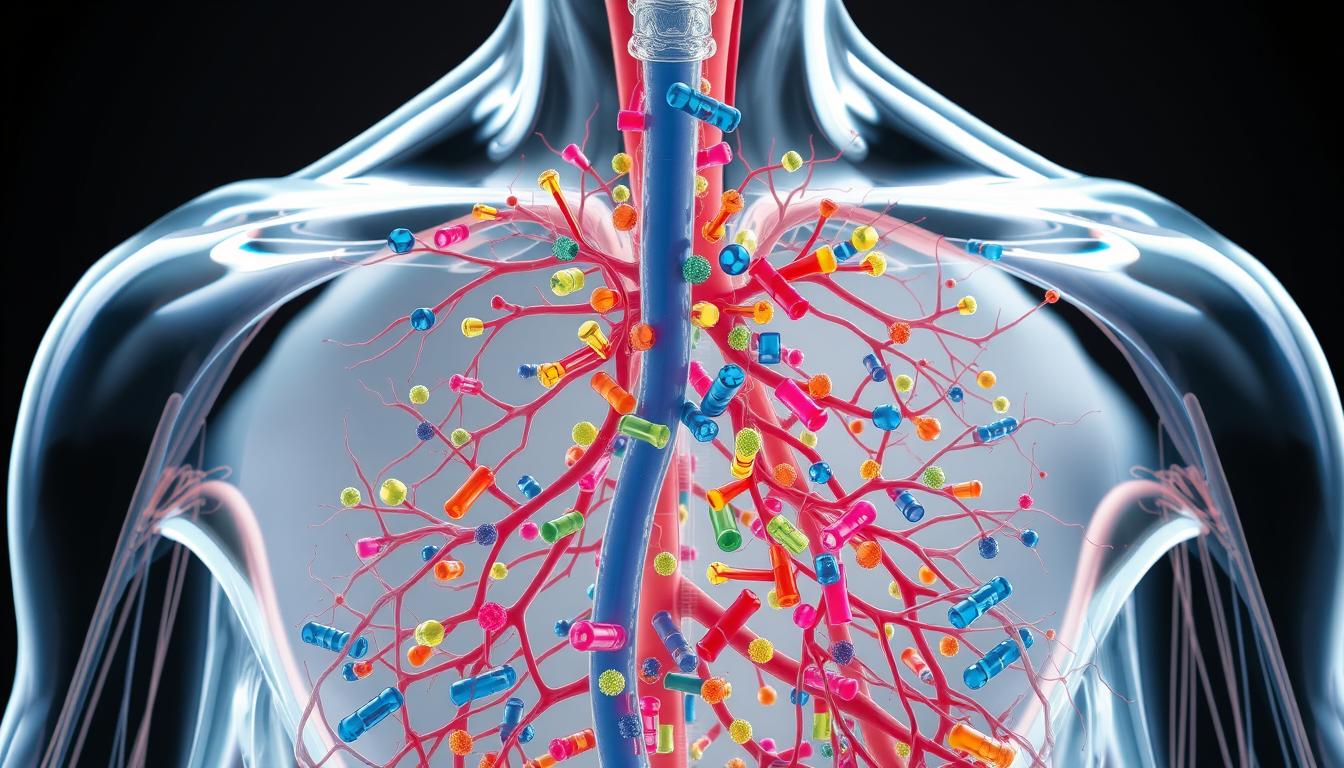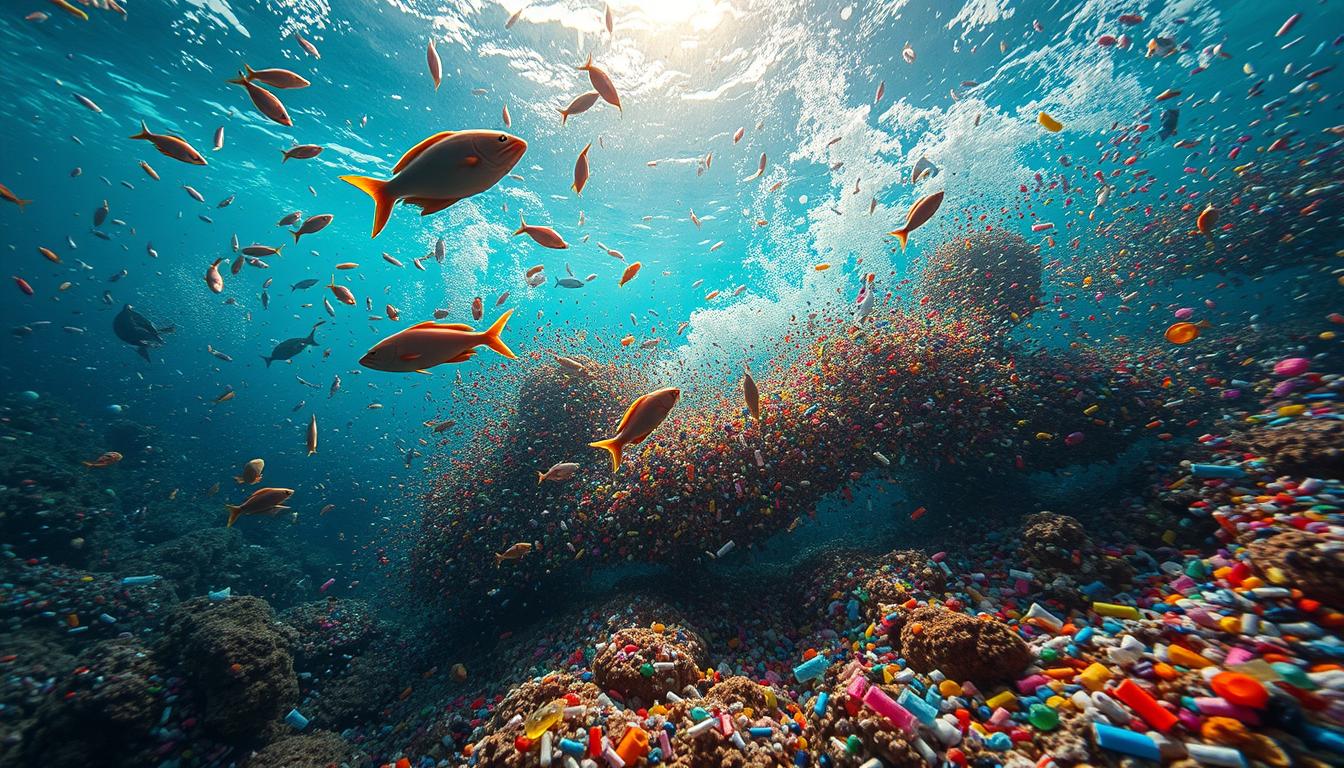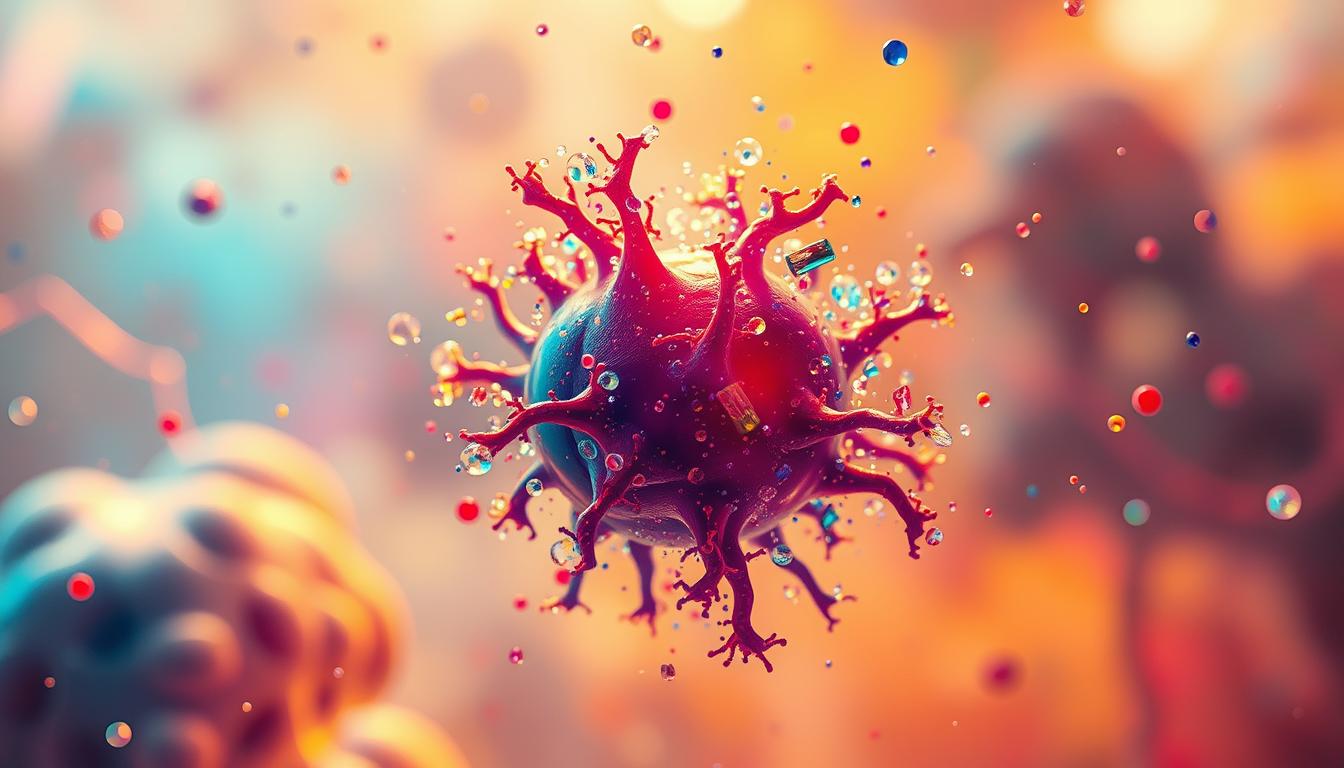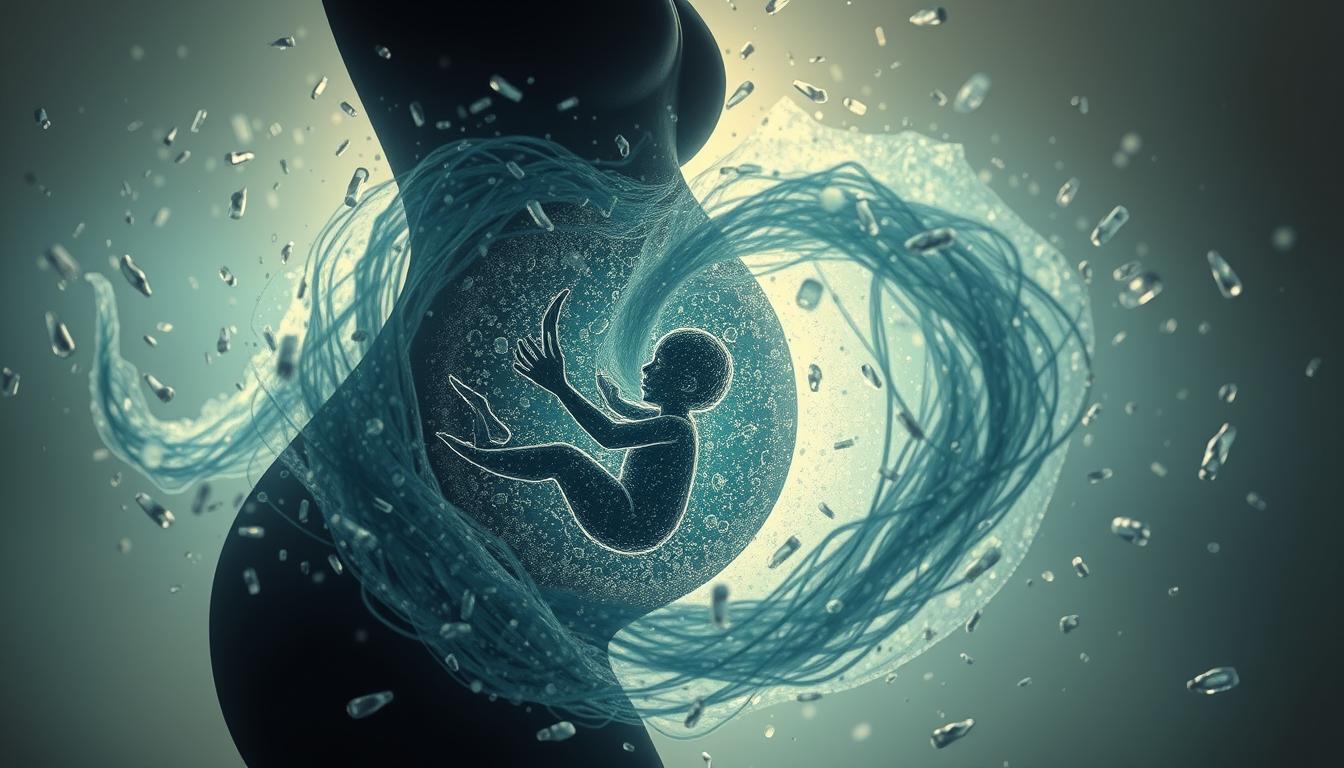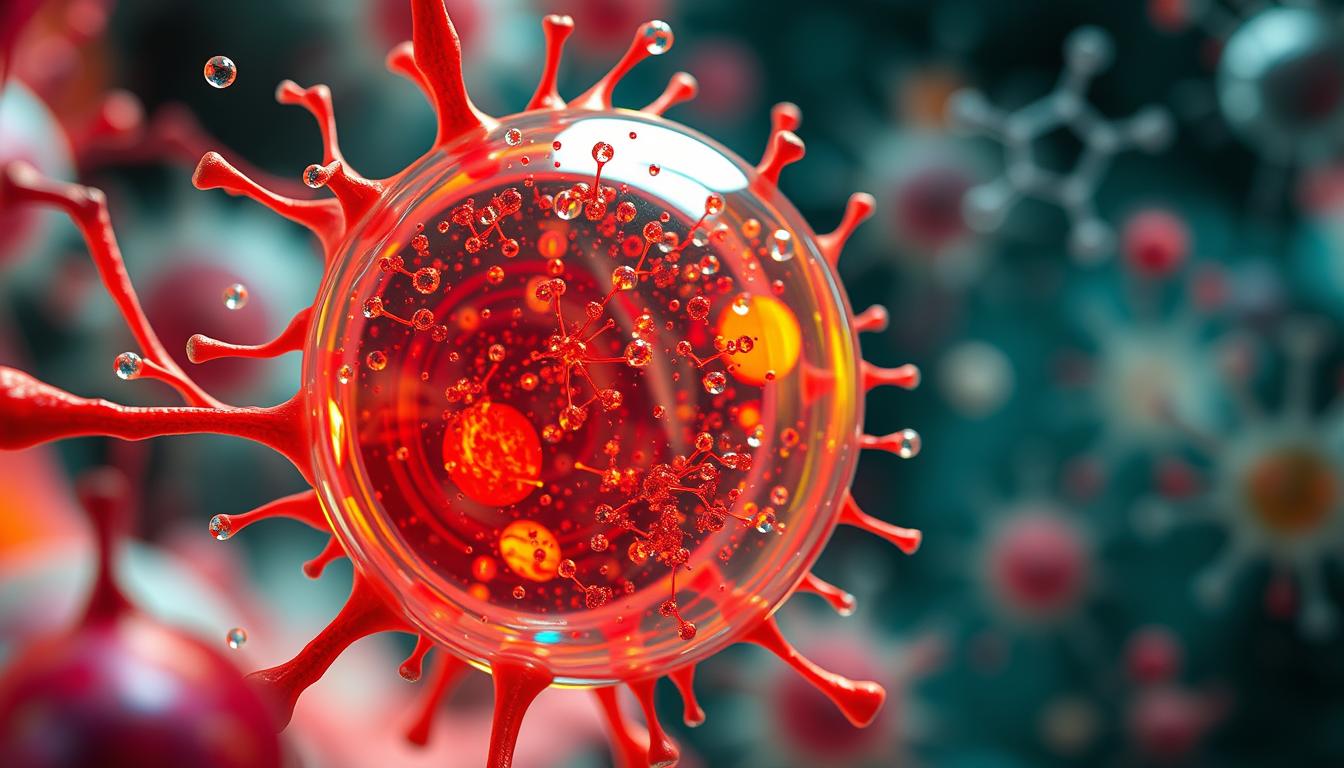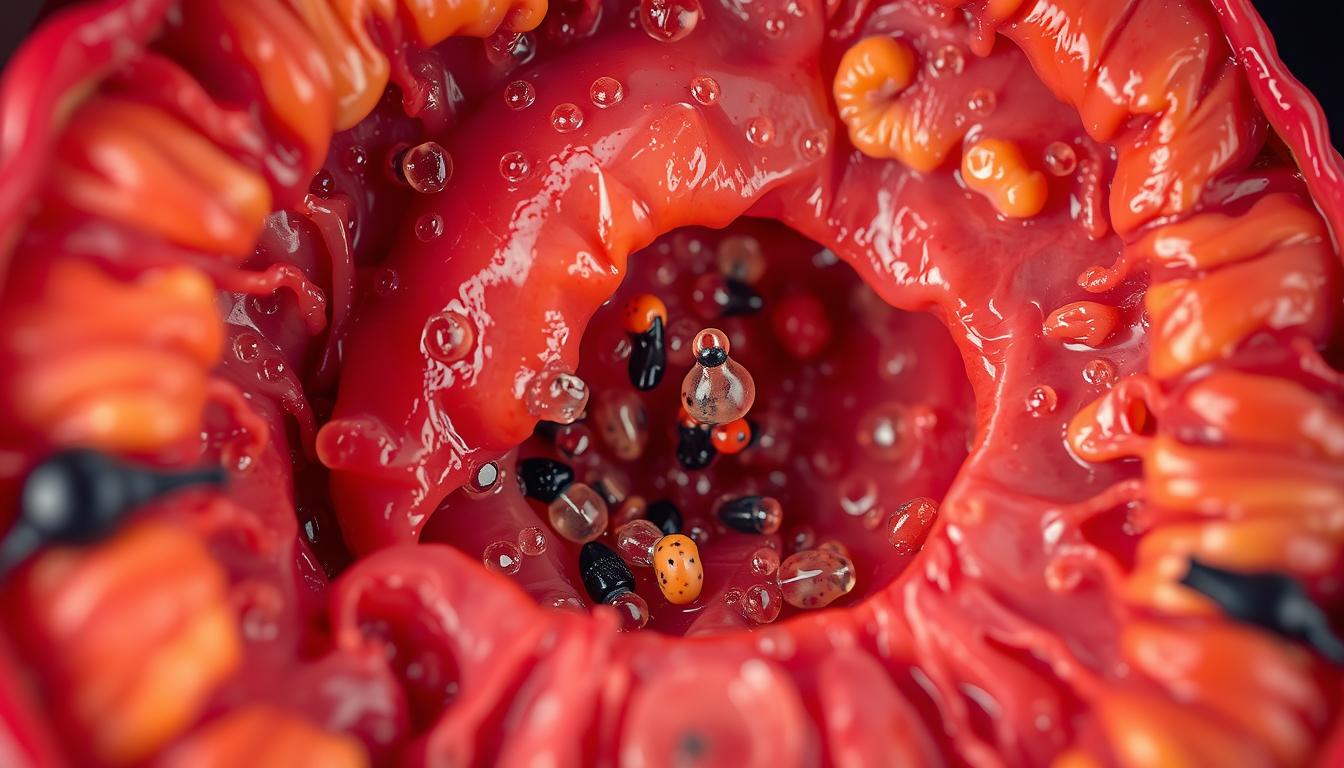Thinking about how microplastics affect our health is key. We need to know how much they’re in our environment and how they might harm us. This includes looking at microplastics in our lymphatic system and how they can be toxic1.
Microplastics are found in many parts of our bodies and fluids. This includes the placenta, lungs, liver, and even our blood. This is a big health concern1.
It’s scary to think we might eat about 50 plastic bags a year. This is because we consume so many microplastics1.
It’s important to understand how microplastics affect us. They’ve been found in many parts of our bodies, like the liver and blood. Even our heart and placenta have been affected2.
We eat a lot of microplastics through food. It’s estimated we consume between 39,000 and 52,000 particles a year2. We also breathe in microplastics, with daily intake ranging from 26 to 130 particles2.
Microplastics make up 90% of ocean waste. We eat an average of 39,000 to 52,000 microplastic particles yearly3.
Recent Discovery of Microplastics in Human Lymphatic System Raises New Health Concerns
Microplastics in the human lymphatic system are a big worry for public health. They can get into our blood, with 77% of blood samples from 17 people showing them4. This could harm our immune system and overall health.
Research shows microplastics can also build up in organs like the liver and kidney. They move from the intestine to these organs5. Animals exposed to microplastics twice a week for four weeks showed changes in their colon, liver, and brain5.
Key Findings from the Research
- Microplastics have been found in human stool, with 15 types identified4.
- They are linked to higher risks of chronic inflammation and cancer4.
- Every year, we produce about 350 million metric tons of plastic, adding to microplastic pollution5.
The finding of microplastics in our lymphatic system calls for more research. We need to understand how they affect our health.
Understanding Your Lymphatic System’s Role in Health
The lymphatic system is key to our immune function and health. Microplastics could harm these functions6. Knowing how the lymphatic system works is vital to understand microplastic’s health impact. It removes toxins and waste and helps transport immune cells.
Studies show microplastics can enter our bodies through breathing, eating, and skin contact7. Inside, they can cause inflammation and oxidative stress. This can damage and kill cells. The lymphatic system’s job to remove microplastics is critical, and any issues can be serious.
Some of the key functions of the lymphatic system include:
- Removing toxins and waste from the body
- Transporting immune cells to areas of infection
- Filtering lymph fluid to remove microplastics and other foreign particles
Understanding the lymphatic system’s role in health is key to grasping microplastic’s impact. By studying microplastics’ effects on the lymphatic system, researchers can find ways to reduce exposure and harm6.
How Microplastics Enter and Impact Your Body
Microplastics can get into your body in several ways. This includes eating them, breathing them in, and through your skin8. They are found in many foods, like seafood, sugar, and honey. On average, there are 1.48 particles of microplastics per gram in seafood and 0.44 particles per gram in sugar8.
They are also in tap water, with 81% of samples worldwide showing microplastics. Bottled water is not safe either, with 93% of bottles tested containing microplastics9.
How microplastics move through our bodies is not fully understood. But research suggests they can interact with cells. This could lead to harm from plastic nanomaterials10. Studying how cells react to plastic nanoparticles is key to understanding health risks.
A study showed that everyone’s stools have microplastics, with an average of 20 particles per 10 grams10. This shows we need to learn more about how microplastics affect us. We also need to use less plastic to reduce their presence in our environment.
| Food Product | Average Microplastic Pollution |
|---|---|
| Seafood | 1.48 particles/g |
| Sugar | 0.44 particles/g |
| Honey | 0.10 particles/g |
Analyzing the Specific Effects of Microplastics in Lymphatic Vessels
Understanding how microplastics affect your body is key. Research shows they can cause inflammation and oxidative stress in lymphatic tissues. This can lead to immune dysfunction11. With global plastic production soaring, this is a big concern11.
Microplastics’ impact on lymphatic vessels is serious for human health. They can stay in the environment for decades, harming ecosystems. This affects fish and marine life, impacting their immune and digestive systems11. Also, studies show they can harm human brain cells11.
Some important facts about microplastic exposure are:
- Microplastics are plastic particles under 5 millimeters, including nano-scale ones12.
- Every year, about 8 million metric tons of plastic enter the oceans12.
- Tap water from 159 global sources showed 81% contained microplastics13.
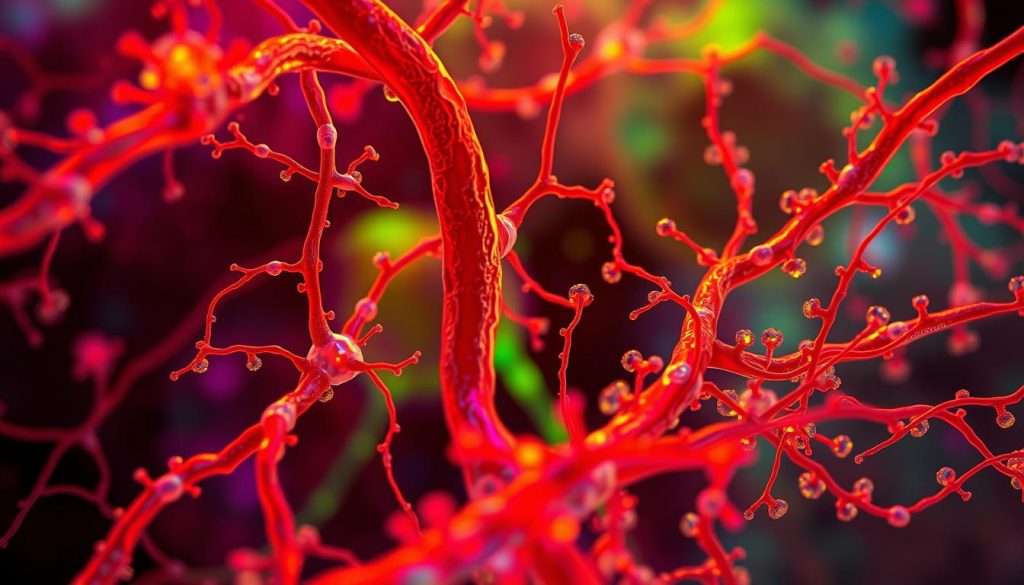
To fight microplastic exposure, we need to understand their effects on lymphatic vessels. By knowing the health risks, we can reduce our exposure and protect our health13.
Current Research on Plastic Nanoparticle Toxicity
Studies have found that plastic nanoparticles can harm cells and mess with how cells work14. They can get inside cells, cause inflammation, and stress cells out. This is important for understanding how plastic might affect our health over time. Lab tests have shown that plastic nanoparticles can kill cells and mess with their function14.
Some key findings from these studies are:
- Microplastics can take centuries or millenniums to break down15.
- Heat can release up to 1.07, 1.44, 2.24, and 1.57 million plastic particles/ml from food packaging15.
- Some products like facial masks, creams, and shampoos may have 1–90% plastic15.
The toxicity of plastic nanoparticles is a big worry. It can cause harm to cells14. We need more research to understand how plastic affects our health.
| Source | Findings |
|---|---|
| Link 1 | Americans are estimated to ingest tens of thousands to millions of microplastics and nanoplastics (M-NPLs) particles yearly14. |
| Link 2 | 10,000 unique chemicals identified in plastics from a 2021 study, with 2,400 of them being of concern15. |
Protective Measures Against Microplastic Exposure
To cut down on plastic nanoparticle exposure, it’s key to make daily changes. Using filtered water and cutting down on plastic use can help a lot6. Also, picking the right personal care products and avoiding single-use plastics can make a big difference.
Technology like the Bye Microplastics AI app can also help. It lets you track and lower your microplastic exposure16. This app is a great tool for those worried about microplastics’ health impacts. By using tech and making smart choices, you can lessen your exposure to microplastics and their harmful effects17.
Daily Habits to Reduce Exposure
- Avoid single-use plastics
- Use water filters
- Choose personal care products carefully
Technology Solutions
The Bye Microplastics AI app is a great tool for cutting down microplastic exposure. It helps you make better choices in your daily life. This way, you can lower your risk of exposure to plastic nanoparticles and their harmful effects6.

By combining these habits and tech solutions, you can lower your microplastic exposure. This is important for a healthier lifestyle and reducing harmful effects1617.
| Microplastic Reduction Strategies | Benefits |
|---|---|
| Using filtered water | Reduces microplastic ingestion |
| Avoiding single-use plastics | Decreases microplastic exposure |
| Utilizing the Bye Microplastics AI app | Provides personalized reduction strategies |
Global Research Initiatives and Future Studies
Research on microplastics has grown a lot, with over 1000 articles in 201918. We don’t fully understand how microplastics affect us and the environment. This shows we need more studies on nanoparticle effects on cells and plastic nanomaterials toxicity.
Global plastic production has skyrocketed, reaching 359 million tonnes by 202319. Most of this waste comes from land, causing a big problem19. Microplastics could lead to serious health issues, like cancer and heart disease19.
Many research projects are underway to tackle microplastic pollution. They aim to learn how microplastics affect cells and the risks they pose. Some important findings include:
- Microplastics have been found in human samples like feces and blood19
- Even small amounts of microplastics can be toxic19
- Changes in behavior and government actions have cut plastic use by 8-85% in some places19
Future studies will explore the long-term health effects of microplastics. They will also look for ways to reduce pollution. By studying nanoparticle effects on cells and plastic nanomaterials toxicity, we can work towards a healthier world.
| Country | Plastic Production (2013) |
|---|---|
| China | 63 million tonnes |
| European Union | 50 million tonnes |
| North America | 49 million tonnes |
Taking Control of Your Microplastic Exposure in an Increasingly Plastic World
Research shows that microplastics are everywhere in our bodies1. It’s important to take steps to control your exposure. By making smart choices and using new technologies, you can help solve this big problem20.
Begin by looking at your daily habits and finding ways to use less plastic. Use reusable containers, say no to single-use plastics, and pick products with less packaging21. Living more sustainably is a big step in fighting against microplastics and plastic pollution.
Also, use technology to your advantage. Apps like Bye Microplastics1 can guide you in making better choices and track your progress. This way, we can all work together to fight plastic pollution and protect our health in a world that’s more and more dependent on plastic21.
FAQ
What are the recent discoveries regarding the presence of microplastics in the human lymphatic system?
What are the immediate implications of microplastics in the lymphatic system for human health?
How does the lymphatic system play a role in maintaining human health?
What are the common sources of microplastic exposure, and how do they enter and impact the human body?
How can microplastics specially affect the lymphatic vessels, and what are the broader implications for human health?
What are the current findings from research on the toxicity of plastic nanoparticles?
What are some practical strategies for reducing microplastic exposure in daily life?
What global research initiatives are currently underway to address the impact of microplastics on human health and the environment?
How can individuals take control of their microplastic exposure and contribute to the broader movement to reduce plastic pollution?
Source Links
- Microplastics in the Human Body: Exposure, Detection, and Risk of Carcinogenesis: A State-of-the-Art Review
- The Plastic Within: Microplastics Invading Human Organs and Bodily Fluids Systems
- Microplastics: A Real Global Threat for Environment and Food Safety: A State of the Art Review
- Microplastics: an often-overlooked issue in the transition from chronic inflammation to cancer – Journal of Translational Medicine
- In Vivo Tissue Distribution of Microplastics and Systemic Metabolomic Alterations After Gastrointestinal Exposure
- Detection of microplastics in human tissues and organs: A scoping review
- Bridging the Gaps between Microplastics and Human Health
- Impact of Microplastics and Nanoplastics on Human Health
- Impacts of microplastics on immunity
- Microplastics found in human stools for the first time
- Microplastic sources, formation, toxicity and remediation: a review – Environmental Chemistry Letters
- Microplastics: Definition, Where They Come From and Effects on Humans
- Frontiers | Impacts of microplastics on immunity
- Recent insights into uptake, toxicity, and molecular targets of microplastics and nanoplastics relevant to human health impacts
- Impacts of micro and nanoplastics on human health – Bulletin of the National Research Centre
- Adverse health effects of exposure to plastic, microplastics and their additives: environmental, legal and policy implications for Israel – Israel Journal of Health Policy Research
- Frontiers | A Review of Human Exposure to Microplastics and Insights Into Microplastics as Obesogens
- Research advances of microplastics and potential health risks of microplastics on terrestrial higher mammals: a bibliometric analysis and literature review – Environmental Geochemistry and Health
- Microplastic sources, formation, toxicity and remediation: a review
- In a first, microplastics found in human poop
- Microplastics in Seafood and the Implications for Human Health – Current Environmental Health Reports
